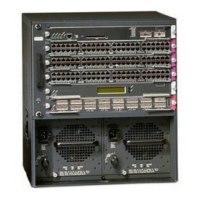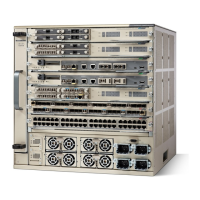16-8
Catalyst 6500 Series Switch and Cisco 7600 Series Router Firewall Services Module Configuration Guide
OL-6392-01
Chapter 16 Managing Software and Configuration Files
Downloading and Backing Up Configuration Files
Enter one of the following commands for the appropriate backup server:
• To copy to a TFTP server, enter the following command:
FWSM# copy {startup-config | running-config | disk:[
path
/]
filename
}
tftp://
server
[/
path
]/
filename
• To copy to a FTP server, enter the following command:
FWSM# copy {startup-config | running-config | disk:[
path
/]
filename
}
ftp://[
user
[:
password
]@]
server
[/
path
]/
filename
[;type=
xx
]
The type can be one of the following keywords:
–
ap—ASCII passive mode
–
an—ASCII normal mode
–
ip—(Default) Binary passive mode
–
in—Binary normal mode
Use ASCII or binary for configuration files (as in this case), and binary only for image files.
Backing Up a Context Configuration within the Context
In multiple context mode, from within a context, you can perform the following backups:
• To copy the running configuration to the startup configuration server (connected to the
admin context), enter the following command:
FWSM/contexta# copy running-config startup-config
• To copy the running configuration to a TFTP server connected to the context network, follow these
steps:
a. To specify the TFTP server that is connected to the context network, enter the following
command:
FWSM/contexta# tftp-server
interface_name
ip_address
path
[/
filename
]
b. To copy the running configuration to the TFTP server, enter the following command:
FWSM/contexta(config)# write net [:
filename
]
If you specify the filename in the tftp-server command (above), you do not need to identify it
in the write net command.
For example:
FWSM/contexta(config)# tftp-server 10.1.1.1 /fwsmconfigs/contextbackup.cfg
FWSM/contexta(config)# write net
Copying the Configuration from the Terminal Display
To print the configuration to the terminal, enter the following command:
FWSM# write terminal
Copy the output from this command, and then paste the configuration into a text file.

